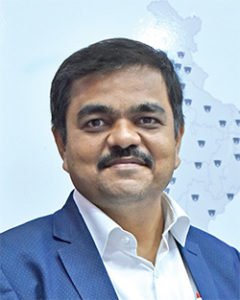 Ashish P Dhakan, MD & CEO, Prama Hikvision India Pvt. Ltd says, “The Intelligent Traffic Cameras are revolutionizing human and computer interactions by enhancing the capabilities of Intelligent Traffic Systems. In many cities, building new road capacity is not an option – either because of available space, disruption to economic activities, or budgetary constraints. In these circumstances, city authorities are beginning to look for smart technologies to make people’s journeys faster and safer.
Ashish P Dhakan, MD & CEO, Prama Hikvision India Pvt. Ltd says, “The Intelligent Traffic Cameras are revolutionizing human and computer interactions by enhancing the capabilities of Intelligent Traffic Systems. In many cities, building new road capacity is not an option – either because of available space, disruption to economic activities, or budgetary constraints. In these circumstances, city authorities are beginning to look for smart technologies to make people’s journeys faster and safer.
Hikvision’s intelligent technology has a wide range of intelligent traffic cameras with special features. The next generation video solutions help city authorities to reduce congestion and deliver major time savings for drivers. Three examples are:
Traffic Guidance: This kind of solution uses smart cameras installed at intersections to monitor and report on real-time traffic flow. It works by constantly observing the flow of traffic lanes, and by counting vehicles within defined areas of the road. Data is then sent to traffic management control centers, where operators can see the build-up of traffic across the city.
The integrated system with High Definition cameras and 3D cameras is capable of Red-light Violation Detection and Speed Violation Detection at the traffic crossings. The hi-tech system aims to improve traffic management and inculcate a sense of driving discipline amongst motorists while ensuring pedestrian safety.
 Critically, this citywide view of traffic allows operators to take action in real time to reduce the root causes of congestion, such as misuse of bus lanes or illegal parking. In the event of a traffic incident, traffic guidance and solutions are also of great help to drivers. Congestion information is displayed for them at each intersection, helping them predict their arrival time and – if delays are serious or persistent – to choose alternative routes or travel options.
Critically, this citywide view of traffic allows operators to take action in real time to reduce the root causes of congestion, such as misuse of bus lanes or illegal parking. In the event of a traffic incident, traffic guidance and solutions are also of great help to drivers. Congestion information is displayed for them at each intersection, helping them predict their arrival time and – if delays are serious or persistent – to choose alternative routes or travel options.
While video is a critical element of the solution, full integration with third-party systems and algorithms is also needed. In this way, traffic data can be visualised on city maps and transmitted effectively to the control center, drivers, emergency services, and others.
In the portfolio of available traffic easing technologies, latest-generation video technology is the star. In particular, innovations in Artificial Intelligence (AI) and deep learning have transformed standard video monitoring with features that alert operators about traffic issues in real time. This allows them to take immediate action to keep lanes clear and to keep traffic flowing.
Traffic Signal Control: This allows traffic lights to be coordinated to keep traffic flowing as freely as possible. The system consumes traffic data from traffic guidance systems to understand where traffic is building up at an intersection. To do this, intelligent traffic cameras count vehicles that cross an intersection as well as detect the length of vehicle queues at an intersection. They simultaneously share the real-time data with the traffic signal system.
Based on this data, traffic lights can be coordinated automatically to even out the traffic flow, giving traffic more or less priority, as needed, by extending or reducing the time available to cross the intersection. This helps to speed up journeys, reduces drivers’ frustration and eliminates the need for manual intervention by traffic police when traffic builds up in one direction.
 TrafficInfraTech Magazine Linking People Places & Progress
TrafficInfraTech Magazine Linking People Places & Progress